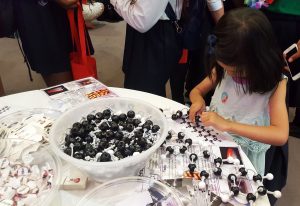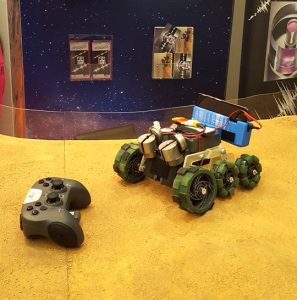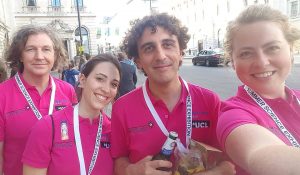Amazing Masers at the Royal Society
Daphné Lubert-Perquel and Jennifer Hack were part of a team of LCN researchers exhibiting at the prestigious Royal Society Summer […]
Daphné Lubert-Perquel and Jennifer Hack were part of a team of LCN researchers exhibiting at the prestigious Royal Society Summer Science Exhibition in London.
The exhibition, which ran from 3-9 July, featured a replica of the very first maser device, and visitors were also able to see a replica maser crystal made by the jewellery manufacturer Swarovski. Hands-on activities included transmitting signals using a maser, constructing molecules using model sets, marshmallows and cocktail sticks, and experiencing the effects of electromagnetic noise when navigating a remote-controlled ‘Mars Rover’ around an obstacle course.
A maser is a device similar to a laser, but which uses microwaves instead of visible light. These waves are the section of the electromagnetic spectrum that support our mobile phone and satellite networks, Bluetooth or WiFi, 3G and 4G and which are also utilised in planetary rovers. By using them we can transmit information and can send images in challenging circumstances, and across vast distances. Masers take extremely weak signals and amplify them, but the images are not perfect, because of the ‘noise’. Until recently they could only operate at sub-freezing temperatures and strong magnetic fields. The LCN team, led by Professor Neil Alford and including researchers from Imperial College and UCL, has developed a new room-temperature form of maser. Thanks to the work of the LCN team, the maser could now enable microwaves to be used in a range of noisy environments.
You can find out more about Masers and Daphné’s research here,
and see more of the Royal Society Summer Exhibition here
![CDT Advanced Materials Characterisation [logo]](https://www.cdt-acm.org/wp-content/themes/cdt-acm-theme/assets/img/cdt-acm-logo-white.svg)


